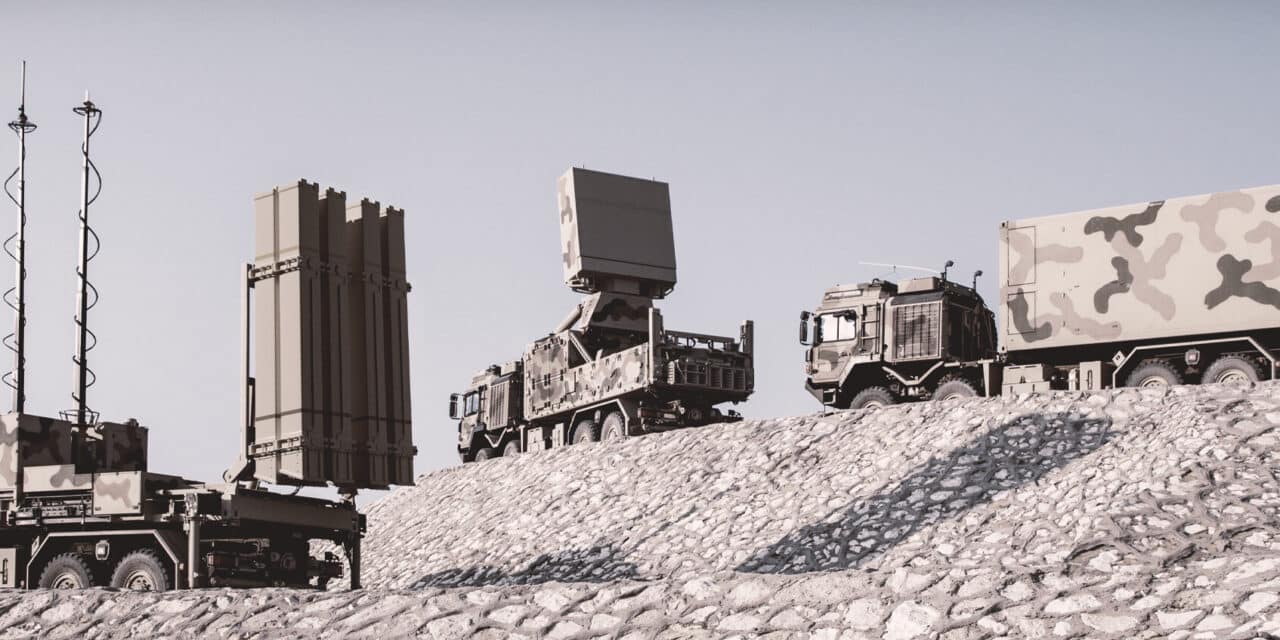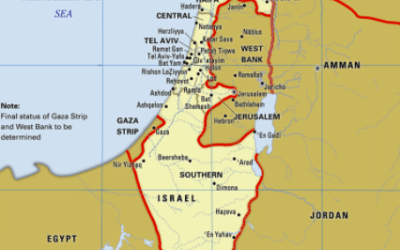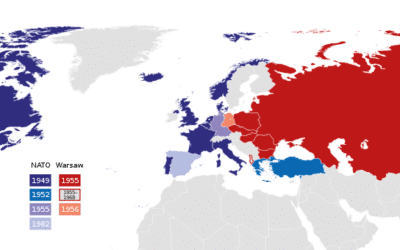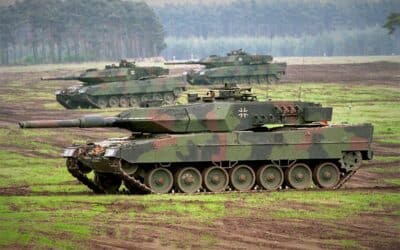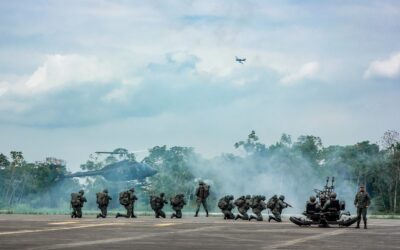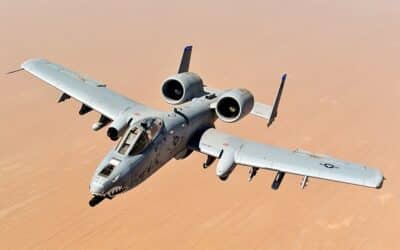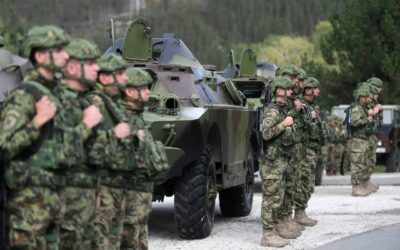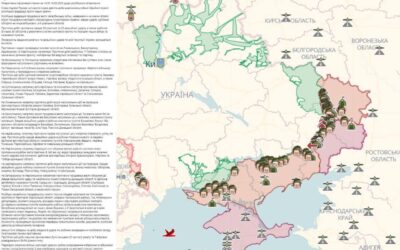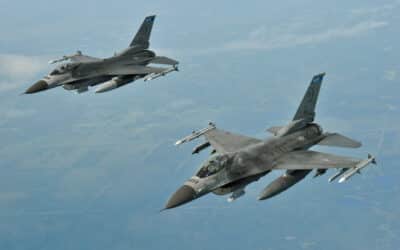Image: https://www.diehl.com/
Air defence systems are the protective shields of a nation, guarding against potential airborne threats. These advanced technological marvels are a testament to human ingenuity and innovation. In this article, we’ll take a tour of the 10 best air defence systems in the world. We’ll delve into who makes them, what makes them unique, and why they’re considered the best. From high-tech radar capabilities to missile accuracy, you’ll get a comprehensive understanding of these remarkable defense tools. Let’s buckle up and start our journey into the world of top-notch air defence systems.
1. United States – Patriot Missile System
The United States is renowned for its advanced air defense systems, and one of the most prominent among them is the Patriot Missile System. Developed by Raytheon, this cutting-edge system has proven to be a game-changer in protecting against aerial threats. In this section, we will delve into the overview, key features, and success stories of the Patriot Missile System.
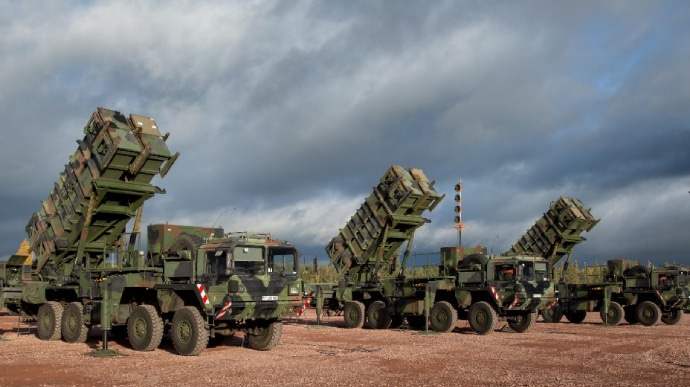
Image: https://www.pravda.com.ua/
Overview
The Patriot Missile System is a long-range, all-altitude air defense system designed to intercept and destroy incoming missiles and aircraft. Its primary objective is to safeguard critical assets, such as military bases, cities, and important infrastructure, from hostile attacks. The system is capable of engaging multiple threats simultaneously, making it a formidable defense mechanism.
Key Features
The Patriot Missile System boasts several key features that contribute to its exceptional performance and effectiveness:
- Multiple-Mode Interceptor: The system is equipped with a variety of interceptors tailored to counter different types of threats, including tactical ballistic missiles, cruise missiles, and enemy aircraft. This versatility allows the Patriot Missile System to adapt to evolving defense scenarios.
- Advanced Radar System: The system utilizes a sophisticated radar system that provides accurate tracking and targeting capabilities. By detecting and tracking incoming threats, the Patriot Missile System can effectively engage and neutralize them before any harm is done.
- Command and Control Network: The Patriot Missile System operates within an integrated command and control network, enabling seamless coordination with other defense assets. This networked approach enhances situational awareness and enables rapid response to potential threats.
- High Mobility: The system is mounted on mobile platforms, allowing it to be rapidly deployed to various locations. This flexibility ensures that the Patriot Missile System can be strategically positioned to protect vital areas without being limited to fixed installations.
Success Stories
Over the years, the Patriot Missile System has demonstrated its impressive capabilities through numerous successful engagements. Here are a few notable success stories:
- Operation Desert Storm (1991): During the Gulf War, the Patriot Missile System played a pivotal role in defending against Iraqi Scud missile attacks. It successfully intercepted numerous Scuds, preventing potential devastation and saving lives.
- Operation Iraqi Freedom (2003): The Patriot Missile System was instrumental in safeguarding coalition forces and important infrastructure during the invasion of Iraq. It effectively neutralized enemy missiles and provided a vital layer of defense against aerial threats.
- Operation Noble Eagle: The Patriot Missile System has been an integral part of the defense measures implemented to protect the United States from airborne threats, particularly after the events of September 11, 2001. It continues to play a crucial role in homeland defense.
- Ukraine (2023): The Patriot Missile System is defending the skies over Ukraine. Probably the most successful operation for this air-defence system.
In conclusion, the Patriot Missile System exemplifies the United States’ commitment to maintaining a robust air defense capability. With its advanced features, proven success stories, and constant technological advancements, this system stands as a testament to the nation’s dedication to protecting its interests and ensuring the safety of its citizens.
2. Russia – S-400 Triumf
The S-400 Triumf, developed by Russia, is regarded as one of the most advanced air defense systems in the world. Its combination of cutting-edge technology and impressive capabilities make it a force to be reckoned with in the military arena. In this section, we will explore the overview, key features, and recent deployments of the S-400 Triumf.
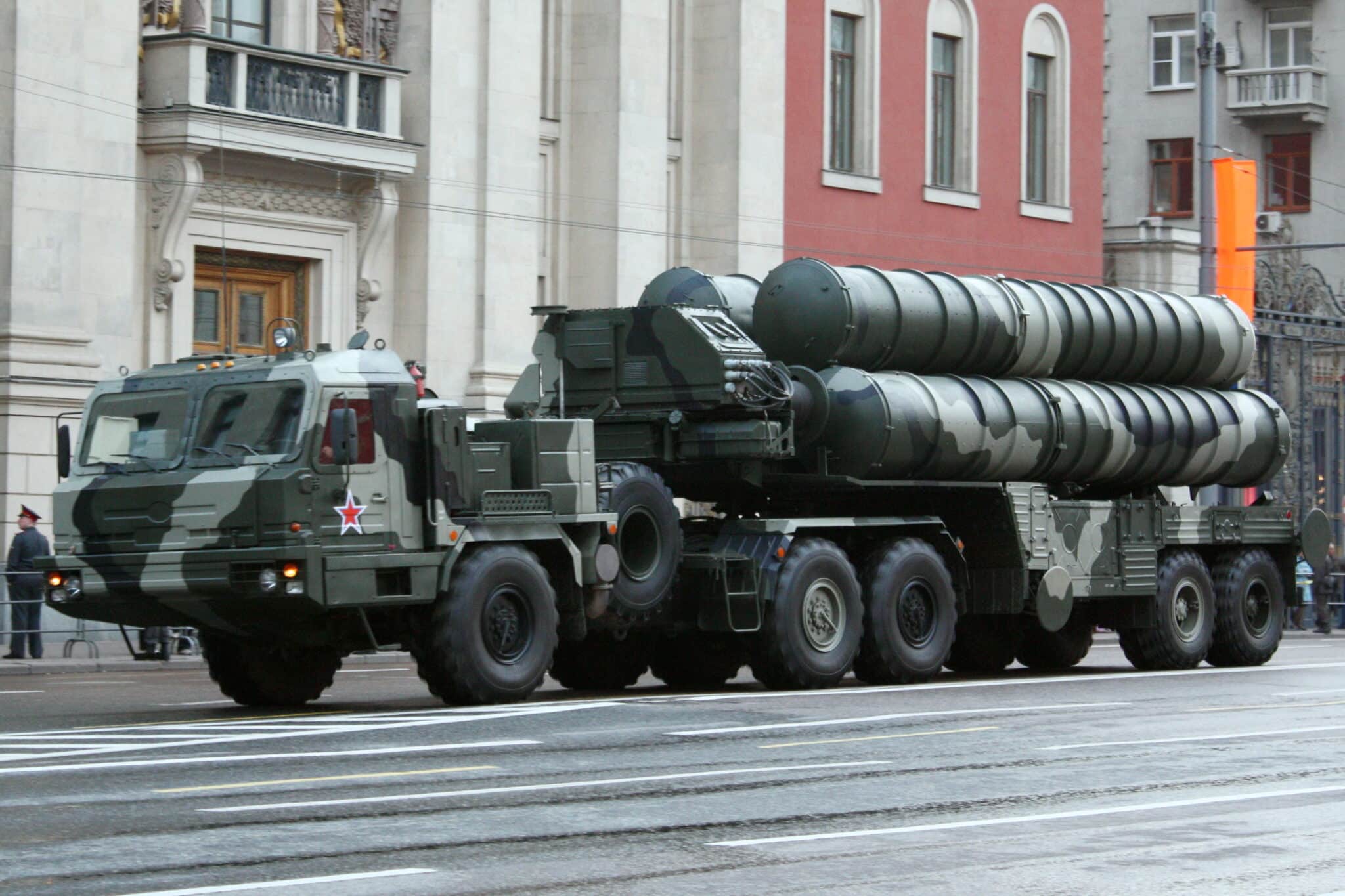
Image: https://de.wikipedia.org/
Overview
The S-400 Triumf, also known as the SA-21 Growler in NATO countries, is a long-range surface-to-air missile system designed to intercept and destroy a wide range of airborne threats. It was developed by the Russian defense company, Almaz-Antey, and has been in service since 2007.
This air defense system is highly versatile and can engage various targets, including aircraft, drones, ballistic and cruise missiles, and even hypersonic targets. With its exceptional range of up to 400 kilometers and the ability to track and engage multiple targets simultaneously, the S-400 is a formidable defense system.
Key Features
The S-400 Triumf boasts several key features that contribute to its exceptional performance and effectiveness. Here are some notable features of this advanced air defense system:
- Long-range capabilities: With a maximum engagement range of 400 kilometers, the S-400 can cover vast airspace, providing an extensive protective umbrella for defended assets.
- Multiple target engagement: The system is capable of tracking and engaging up to 80 targets simultaneously, including aircraft, ballistic missiles, and even stealth targets.
- Advanced radar technology: The S-400 is equipped with powerful radar systems, including the 92N6E Grave Stone, which can detect and track targets at long ranges and with high accuracy.
- Interception versatility: It can employ a variety of missiles to engage different types of threats, such as the 48N6 series for long-range targets and the shorter-range 9M96 series for maneuverable targets.
- Mobility and flexibility: The S-400 is mounted on highly mobile vehicles, allowing for rapid deployment and repositioning. This mobility enhances its effectiveness in different operational scenarios.
Recent Deployments
The S-400 Triumf has been deployed by Russia in various locations, both domestically and internationally, showcasing its prominence and the trust placed in its capabilities. Here are a few notable recent deployments:
- Russia: The Russian military has deployed the S-400 Triumf extensively within its own territory to protect key strategic locations, including military bases and important infrastructure.
- Syria: In 2015, Russia deployed the S-400 to its Khmeimim Air Base in Syria, providing a robust air defense umbrella for its forces operating in the region. This deployment significantly increased the protection of Russian assets and personnel.
- Turkey: In a controversial move, Turkey became the first NATO member to acquire the S-400 system. The deployment of the S-400 in Turkey has caused tensions within the NATO alliance and raised concerns about interoperability with other NATO systems.
The S-400 Triumf has proven its capabilities in various real-world scenarios, reaffirming its status as a formidable air defense system. Its advanced technology, long-range capabilities, and adaptability make it a significant asset in the hands of those who possess it.
3. HQ-9: China’s Advanced Air Defence System
China’s HQ-9 is undoubtedly one of the most formidable air defense systems in the world. With its cutting-edge technology and impressive capabilities, the HQ-9 plays a vital role in safeguarding Chinese airspace. In this section, we will delve into an overview of the system, explore its key features, and examine its notable export success.
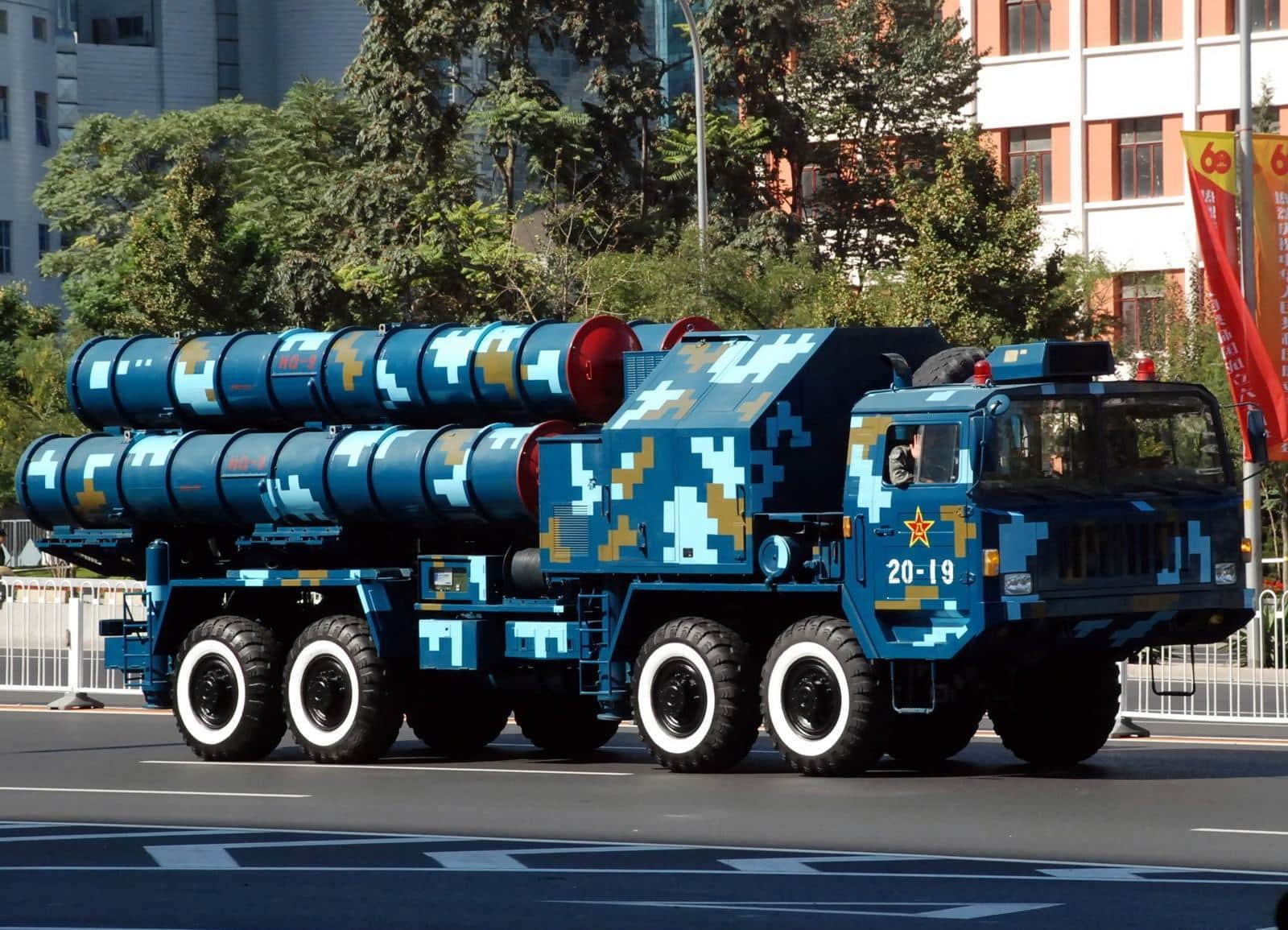
Image: Wikipedia
Overview
The HQ-9, also known as the Hongqi-9, is a surface-to-air missile system developed by China. Designed to protect against a wide range of aerial threats, including aircraft, helicopters, cruise missiles, and unmanned aerial vehicles (UAVs), this air defense system has garnered significant attention worldwide.
The HQ-9 system consists of a network of radars, launchers, and missiles. Its sophisticated radar system allows for early detection and tracking of potential targets, providing ample time for interception. With a range of up to 200 kilometers, the system can effectively engage targets at both high and low altitudes.
Key Features
China’s HQ-9 boasts several key features that make it a formidable force in the realm of air defense. Here are some of its notable capabilities:
- Long-range interception: With a maximum range of 200 kilometers, the HQ-9 can effectively engage targets that pose a threat to Chinese airspace. Its extended reach ensures a wide coverage area, making it difficult for hostile aircraft or missiles to breach.
- Multiple target engagement: The HQ-9 system is capable of simultaneously engaging multiple targets, thanks to its advanced radar and command-and-control capabilities. This feature enables the system to effectively counter saturation attacks, where multiple threats are launched simultaneously.
- Versatile missile options: The HQ-9 utilizes different types of missiles, including the medium-range HQ-9A and the extended-range HQ-9B, depending on the operational requirements. These missiles are equipped with advanced guidance systems, allowing for precise targeting and interception.
- Mobility and flexibility: The HQ-9 system is mounted on mobile launchers, providing it with the flexibility to be deployed in various terrains. This mobility allows for rapid response and adaptability to changing operational scenarios.
Export Success
China’s HQ-9 has gained notable success in the international arms market, attracting interest from several countries seeking advanced air defense capabilities. Its export success can be attributed to the following factors:
- Cost-effectiveness: The HQ-9 offers a competitive advantage in terms of cost, making it an attractive option for countries looking to bolster their air defense capabilities without breaking the bank.
- Performance reliability: The system has demonstrated its reliability and effectiveness through extensive testing and operational deployment. This track record of performance enhances its appeal to potential buyers.
- Customization options: China offers customization options for the HQ-9 system, allowing buyers to tailor the system to their specific requirements. This flexibility ensures that the system can be adapted to diverse operational environments.
- Technical assistance and training: China provides comprehensive technical assistance and training to the purchasing countries, ensuring they can effectively deploy and operate the HQ-9 system.
In conclusion, China’s HQ-9 air defense system stands out as a technologically advanced and highly capable asset within the global air defense landscape. Its long-range interception capabilities, versatility, and successful export ventures have solidified its position as one of the best air defense systems in the world.
4. The Iron Dome: Israel’s Air Defense
When it comes to air defense systems, few can match the power and effectiveness of Israel’s Iron Dome. Developed by Rafael Advanced Defense Systems, this cutting-edge technology has revolutionized the way countries protect their airspace. In this section, we will delve into the key features and effectiveness of the Iron Dome, unraveling the secrets behind its success.
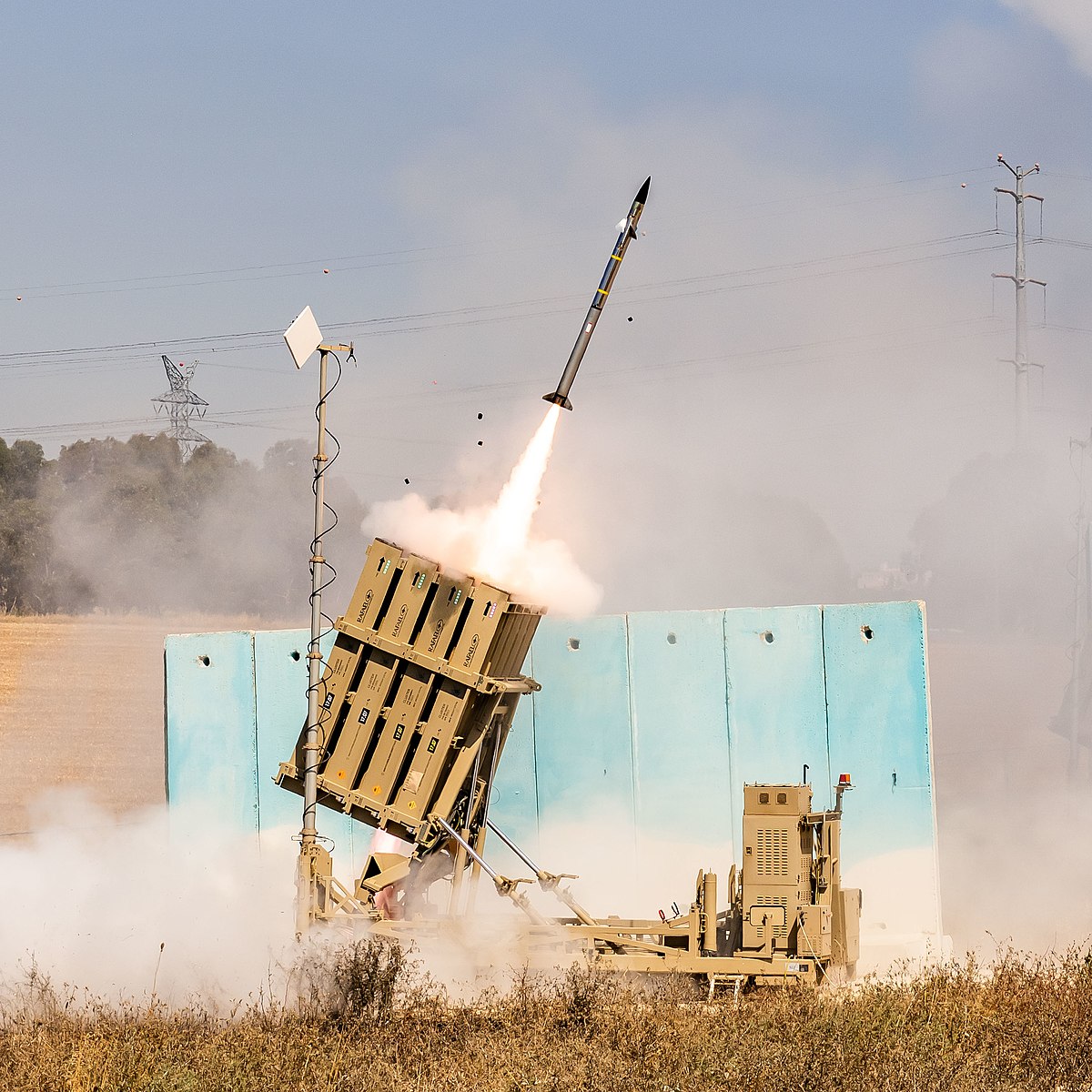
Image: Wikipedia
Key Features
The Iron Dome boasts an impressive array of features that make it a force to be reckoned with in the realm of air defense. Here are some of its standout characteristics:
- Radar Technology: The Iron Dome is equipped with advanced radar systems that can detect and track incoming threats with remarkable accuracy. This allows for swift and precise interception of hostile projectiles.
- Tamir Interceptor Missiles: The heart of the Iron Dome lies in its interceptor missiles, known as Tamir. These agile missiles are capable of neutralizing a wide range of threats, including rockets, artillery shells, and even drones. Their ability to intercept and destroy incoming projectiles has earned the Iron Dome its well-deserved reputation.
- Real-time Data Analysis: The system’s advanced software continuously analyzes incoming data, calculating the trajectory and threat level of potential targets. This real-time analysis enables the Iron Dome to prioritize and engage the most critical threats, ensuring maximum effectiveness.
- Mobility and Flexibility: The Iron Dome can be rapidly deployed and relocated, enhancing its ability to defend strategic locations as needed. Its mobility allows it to adapt to changing threat scenarios, providing an agile defense solution.
- Cost-Effectiveness: Despite its state-of-the-art technology, the Iron Dome offers a cost-effective solution for air defense. Its ability to accurately intercept only the most imminent threats helps reduce unnecessary missile consumption, resulting in significant cost savings.
Effectiveness
The effectiveness of the Iron Dome is unquestionable, as it has consistently proven its capabilities in real-world scenarios. Here are some key factors that contribute to its high success rate:
- High Interception Rate: The Iron Dome has an impressive success rate, reportedly intercepting around 90% of the threats it engages. This exceptional rate of interception is a testament to its advanced technology and robust operational capabilities.
- Protection of Civilian Populations: One of the Iron Dome’s primary objectives is to protect civilian populations from enemy attacks. By neutralizing incoming threats before they can reach their targets, the system has saved countless lives and prevented significant damage to infrastructure.
- Boosting National Security: The Iron Dome not only provides immediate protection against aerial threats but also bolsters a nation’s overall security. Its presence acts as a deterrent, discouraging potential aggressors and ensuring a safer environment for both military and civilian assets.
In conclusion, the Iron Dome stands as a shining example of the technological prowess and defensive capabilities of the Israeli defense industry. Its advanced features, remarkable effectiveness, and cost-efficiency make it an indispensable asset for any nation seeking to safeguard its airspace. With the Iron Dome at the forefront, Israel continues to set the benchmark for air defense systems worldwide.
5. France – SAMP/T
The SAMP/T (Sol-Air Moyenne Portée/Terrestre) is one of the best air defense systems in the world, developed by France. In this section, we will explore the overview, key features, and international cooperation associated with this impressive system.
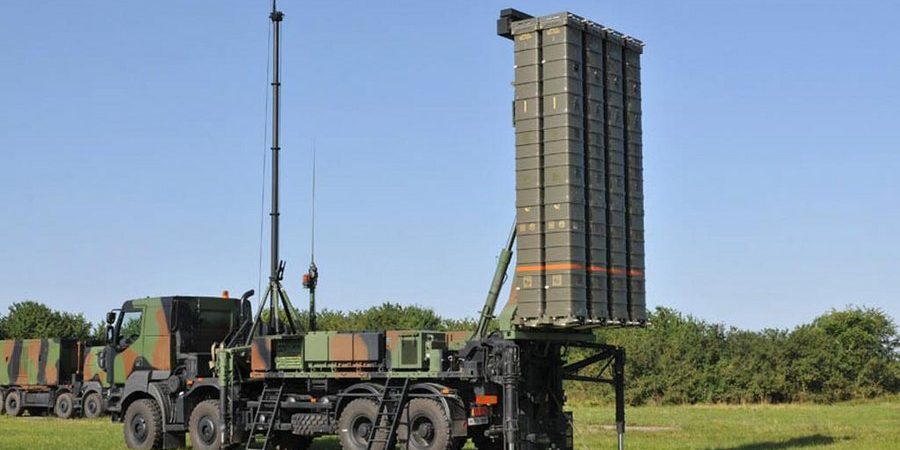
Overview
The SAMP/T is a state-of-the-art air defense system designed to protect military assets, critical infrastructure, and civilian populations from aerial threats. It combines advanced missile technology with a highly effective command and control system, making it a formidable defense solution.
This system is capable of engaging various airborne threats, including aircraft, helicopters, unmanned aerial vehicles (UAVs), and even ballistic missiles. Its versatility and reliability have made it a trusted choice for many countries around the world.
Key Features
The SAMP/T boasts several key features that contribute to its exceptional performance and effectiveness:
- Missile Capabilities: The system is equipped with Aster 30 surface-to-air missiles, which have an impressive range of up to 120 kilometers (75 miles) and can reach altitudes of 20,000 meters (65,000 feet). These missiles utilize innovative technologies to ensure high accuracy and reliability.
- Multi-Sensor Integration: The SAMP/T integrates multiple sensors, including radars and optronics, to provide comprehensive situational awareness. This real-time information allows operators to detect, track, and engage multiple threats simultaneously.
- Command and Control: The system’s advanced command and control system enables seamless coordination between different components, such as missile launchers and radars. This centralized control enhances response time and maximizes the overall effectiveness of the system.
- Mobility and Flexibility: The SAMP/T is highly mobile and can be rapidly deployed to different locations based on operational requirements. Its transportability allows it to adapt to changing defense scenarios, making it an adaptable solution for various missions.
International Cooperation
France has actively pursued international cooperation in the development and deployment of the SAMP/T system. This collaboration has strengthened its capabilities and fostered partnerships with other nations. Some notable instances of international cooperation include:
- Italian Collaboration: France and Italy jointly developed the SAMP/T system through a partnership between the two countries defense industries. This collaboration has resulted in the successful integration of French missile technology with Italian radar systems, further enhancing the system’s capabilities.
- Export Success: The SAMP/T has been exported to countries such as Singapore and Morocco, showcasing France’s commitment to international cooperation. These partnerships have not only bolstered the defense capabilities of these nations but have also promoted friendly relations and interdependence in the defense sector.
- NATO Integration: The SAMP/T system is integrated into NATO’s air defense network, allowing for interoperability and coordination with other member nations. This integration enhances collective defense efforts and strengthens the overall security of the alliance.
In conclusion, the SAMP/T air defense system developed by France is a highly advanced and versatile solution for countering airborne threats. Its impressive missile capabilities, multi-sensor integration, and international cooperation make it one of the top choices in the world. Whether it’s protecting military assets or safeguarding civilian populations, the SAMP/T system stands as a testament to France’s commitment to innovation and collaboration in the field of air defense.
6. Germany – MEADS
The MEADS (Medium Extended Air Defense System) is an advanced air defense system developed jointly by Germany, Italy, and the United States. It is designed to provide effective protection against a wide range of airborne threats, including aircraft, helicopters, unmanned aerial vehicles (UAVs), and ballistic missiles. In this section, we will explore the overview, key features, and future developments of the MEADS system.
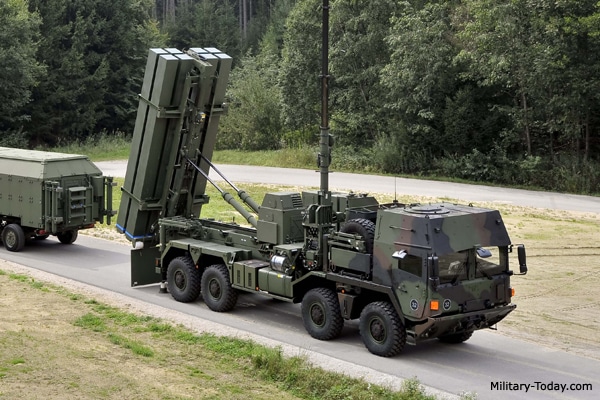
Overview
The MEADS system is a highly capable and mobile air defense solution that combines advanced technologies to ensure enhanced protection for critical assets and forces. It is specifically designed to meet the challenges of modern warfare and provide a robust defense against evolving threats.
With its 360-degree coverage, the MEADS system offers comprehensive situational awareness, enabling operators to detect and track multiple targets simultaneously. This allows for quick and accurate threat assessment, facilitating the timely engagement and neutralization of hostile airborne threats.
Key Features
The MEADS system incorporates several key features that make it a formidable air defense solution. Here are some of its notable features:
- Modularity and Mobility: The MEADS system is designed for rapid deployment and maneuverability. Its modular architecture allows for easy integration with existing command and control systems, enabling seamless interoperability with other military assets. Additionally, its mobility ensures flexibility in positioning and enhances the system’s overall effectiveness.
- Advanced Radars: The system is equipped with advanced radars, including the 360-degree active electronically scanned array (AESA) radar. This radar provides superior detection, tracking, and discrimination capabilities, enhancing the system’s ability to identify and engage multiple targets simultaneously.
- Hit-to-Kill Interceptors: The MEADS system utilizes hit-to-kill interceptors, which are highly agile missiles that destroy incoming threats through direct impact. This approach minimizes collateral damage and ensures maximum effectiveness against a wide range of targets, including cruise missiles and tactical ballistic missiles.
- Network-Centric Operations: The MEADS system employs a network-centric approach, allowing for seamless integration with other air defense assets and enabling real-time sharing of information. This enhances overall situational awareness and facilitates coordinated and effective responses to airborne threats.
Future Developments
The MEADS system is continually evolving to address emerging threats and incorporate advancements in technology. Some of the future developments for the system include:
- Improved Interceptor Performance: Efforts are underway to enhance the performance of MEADS interceptors, including increased speed, range, and maneuverability. These improvements will further strengthen the system’s ability to engage and neutralize evolving threats.
- Enhanced Integration Capabilities: The MEADS system is being further developed to enhance its interoperability with other air defense systems. This will enable seamless integration into existing defense networks, fostering greater coordination and effectiveness in joint military operations.
- Advanced Countermeasure Capabilities: Ongoing research and development aim to equip the MEADS system with advanced countermeasure capabilities, enhancing its ability to counter stealthy threats and mitigate the effectiveness of electronic warfare tactics.
In conclusion, the MEADS system developed by Germany, Italy, and the United States is a highly capable and mobile air defense solution. With its advanced features, including modularity and mobility, advanced radars, hit-to-kill interceptors, and network-centric operations, it offers comprehensive protection against a wide range of airborne threats. The ongoing future developments further strengthen the system’s capabilities, ensuring its effectiveness in addressing evolving challenges in air defense.
7. India – Akash
India’s Akash is one of the finest air defence systems in the world, showcasing the country’s indigenous technological advancements. Developed by the Defence Research and Development Organisation (DRDO), the Akash missile system provides a robust defense against aerial threats, making it a vital component of India’s military arsenal.
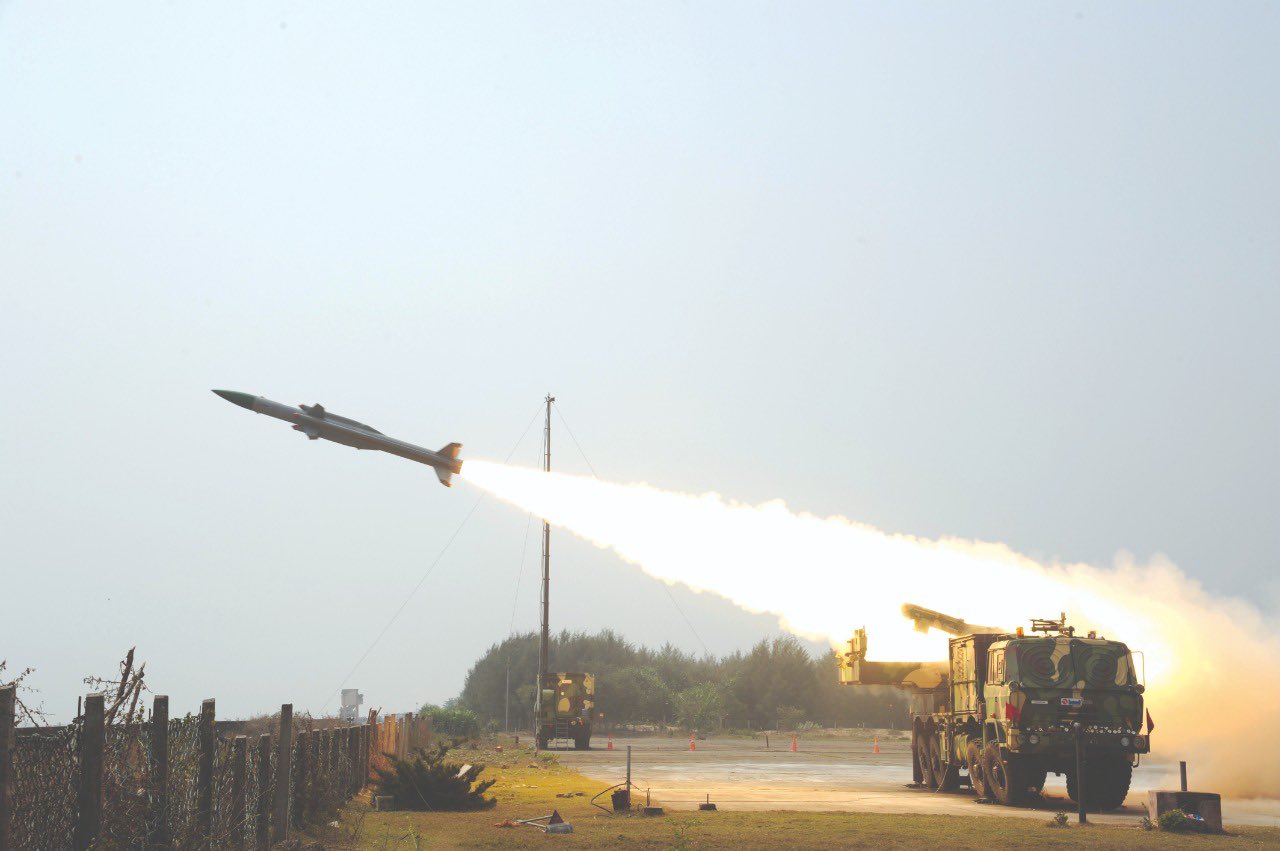
Image: https://newsonair.com/
Key Features
The Akash air defence system boasts several key features that make it highly effective in neutralizing airborne threats. Here are some notable features:
- Versatility: The Akash system is versatile and can engage multiple aerial targets simultaneously, including aircraft, helicopters, drones, and subsonic cruise missiles.
- Medium-range coverage: Its range of approximately 25 kilometers allows the Akash missile system to provide a protective shield over a significant area, safeguarding critical assets and military installations.
- Integrated Command and Control: Akash is equipped with an advanced command and control system, enabling seamless integration with other air defense systems. This integration enhances coordination and facilitates a comprehensive defense network.
- High maneuverability: The missiles used in the Akash system are highly maneuverable, ensuring agility in intercepting fast-moving targets. This capability makes it challenging for hostile aircraft or missiles to evade interception.
- Electronic Counter-Countermeasures (ECCM): The Akash system is equipped with ECCM features, which help counter attempts to jam or disrupt its radar signals. This enhances its ability to operate effectively even in the presence of electronic warfare.
Indigenous Success
The development and deployment of the Akash air defence system mark a significant milestone for India’s defense industry. Here are some noteworthy achievements:
- Indigenous Technology: The Akash system is a testament to India’s indigenous technological prowess. It is developed and manufactured within the country, showcasing self-reliance in defense capabilities.
- Successful Test Trials: The Akash system has undergone rigorous test trials, including live-fire exercises, to validate its performance and reliability. These tests have demonstrated its ability to intercept and destroy aerial threats with a high degree of accuracy.
- Operational Deployment: The Indian Armed Forces have successfully deployed the Akash system, reinforcing its credibility and effectiveness in real-world scenarios. It has been integrated into the air defense networks of the Indian Army, Navy, and Air Force, ensuring comprehensive protection across different domains.
- Export Potential: The Akash air defence system has garnered international attention and interest. Its successful deployment by the Indian Armed Forces has sparked inquiries from several countries, opening avenues for export and showcasing India’s defense capabilities on a global scale.
In conclusion, India’s Akash air defence system stands as a remarkable achievement in indigenous defense technology. With its versatile capabilities, advanced features, and successful deployment, it serves as a testament to India’s commitment to self-reliance and its ability to develop world-class defense systems. The Akash system not only safeguards India’s sovereignty but also presents a potential export opportunity, further bolstering India’s position in the global defense industry.
8. United Kingdom – Rapier
The United Kingdom’s Rapier air defense system is one of the most capable and renowned systems in the world. With its advanced features and historical significance, Rapier has played a crucial role in safeguarding the UK’s airspace for decades. In this section, we will explore the overview, key features, and historical significance of the Rapier system.
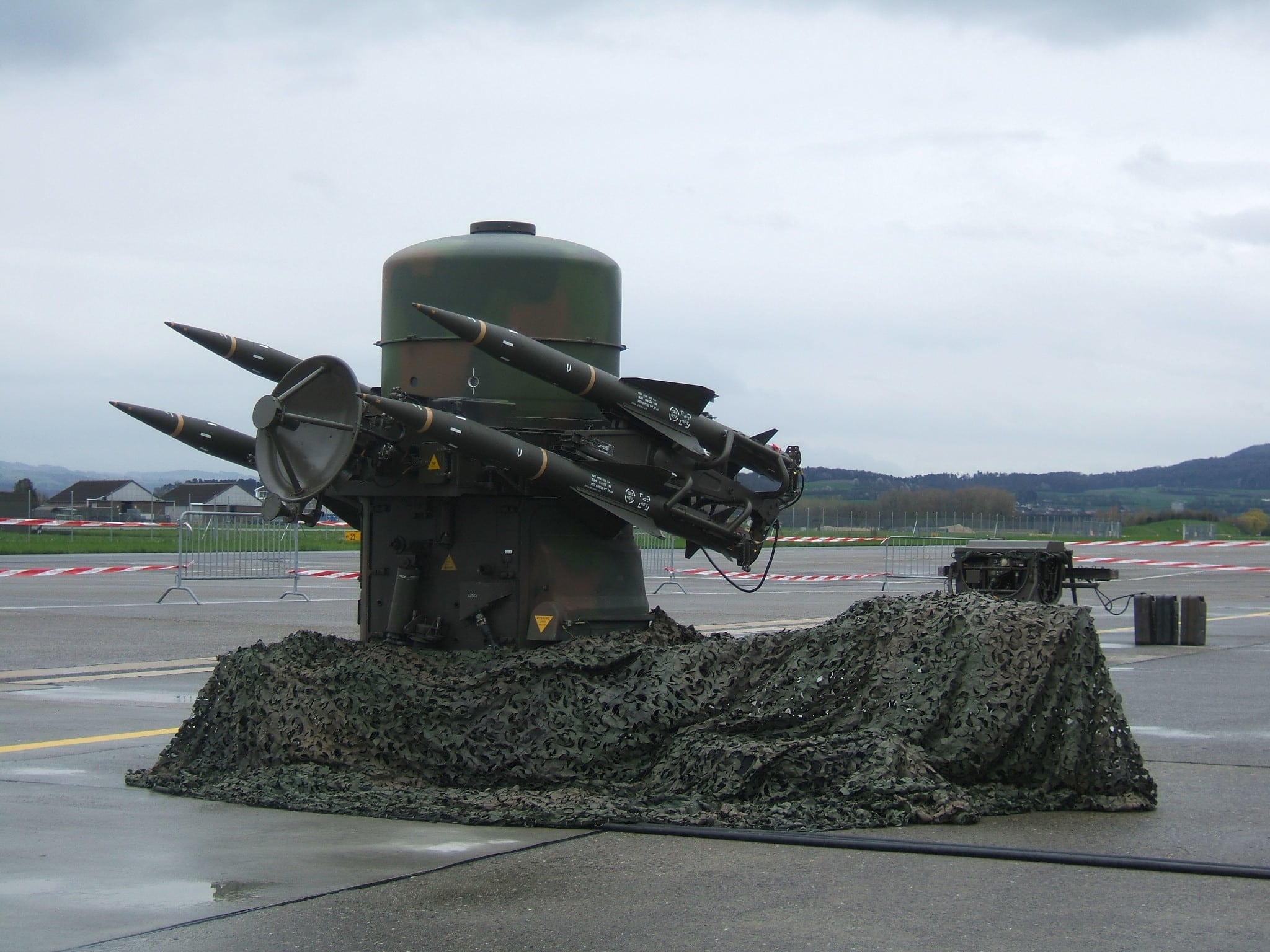
Image: Wikipedia
Overview
Rapier, developed by the British engineering company British Aerospace (now MBDA), is a surface-to-air missile system designed to defend against low-level aerial threats. It was first introduced into service with the British Army in 1972 and later adopted by several other countries. The system’s primary objective is to provide protection against enemy aircraft, helicopters, and unmanned aerial vehicles (UAVs).
Key Features
- Mobility: The Rapier system is highly mobile, allowing it to be rapidly deployed to different locations, including remote and difficult terrains. This mobility ensures that the system can adapt to changing operational requirements effectively.
- Firepower: Rapier is equipped with a launcher that can hold up to eight missiles, ready to engage incoming threats. Each missile is guided by radar and has a high explosive warhead, ensuring a high probability of hitting its target.
- Accuracy and Range: The system’s radar provides accurate tracking and guidance for the missiles, enabling them to engage targets at extended ranges. With a range of approximately eight kilometers (five miles), Rapier can effectively engage targets beyond the visual range.
- Multi-Role Capability: Rapier’s versatility allows it to be used in various operational scenarios. It can provide air defense for ground forces, effectively protecting military installations, airfields, and other critical assets. Additionally, the system can be integrated into naval vessels, bolstering their defense capabilities.
Historical Significance
Rapier has a rich history of successful deployments and has played a vital role in numerous military operations. Some notable historical instances include:
- Falklands War: During the Falklands War in 1982, Rapier was deployed by the British forces to defend against Argentine airstrikes. The system’s exceptional performance contributed to the successful defense of the British task force and played a crucial role in the overall victory.
- International Deployments: The United Kingdom has deployed Rapier systems in various international operations, providing air defense support to allied forces. This includes deployments in Bosnia, Iraq, and Afghanistan, where the system proved its effectiveness in complex and challenging environments.
In conclusion, the Rapier air defense system is a highly capable and versatile asset for the United Kingdom. Its mobility, firepower, accuracy, and historical significance make it one of the top air defense systems worldwide. By continuously upgrading and adapting the system to modern threats, the UK ensures its airspace remains protected and its military forces remain secure.
9. South Korea – KM-SAM
The KM-SAM, short for Korea Medium Range Surface-to-Air Missile, is an impressive air defense system developed by South Korea. It is designed to protect the country’s airspace from various threats, including enemy aircraft and missiles. In this section, we will delve into the overview, key features, and regional influence of the KM-SAM.
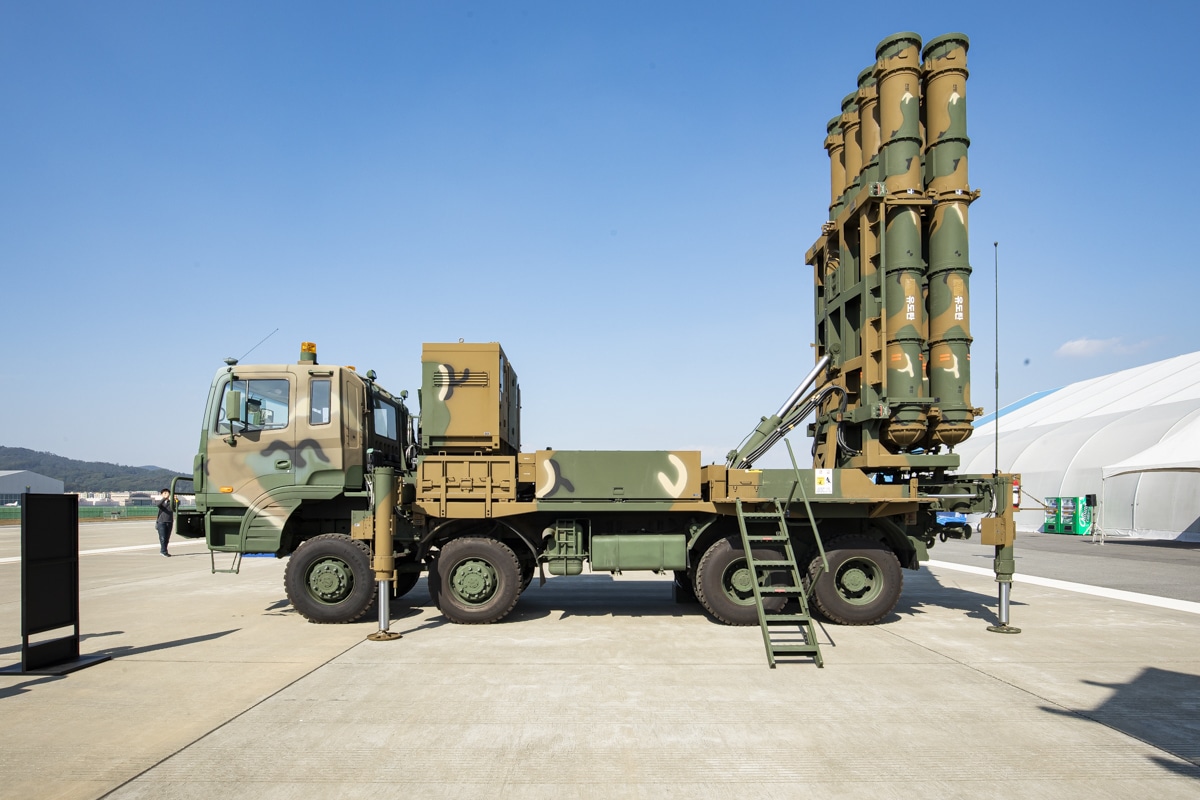
Image: https://www.defensenews.com/
Overview
The KM-SAM is a cutting-edge air defense system that combines advanced technology and robust capabilities. It is primarily developed to counter airborne threats and ensure the safety of South Korean airspace. With its exceptional range and accuracy, the KM-SAM provides a formidable defense against potential adversaries.
Key Features
- Long-Range Capability: The KM-SAM boasts an impressive range, allowing it to engage targets at a considerable distance. This extended reach enhances its effectiveness in intercepting threats before they can reach their intended targets.
- Multiple Target Engagement: Equipped with multiple launchers and tracking radars, the KM-SAM has the capacity to engage multiple targets simultaneously. This versatility enables it to handle complex scenarios where multiple threats may be present.
- Interoperability: The KM-SAM is designed to seamlessly integrate with other air defense systems, enhancing the overall capabilities of South Korea’s defense network. This interoperability ensures a coordinated and effective response to potential threats.
- Advanced Tracking and Guidance System: The KM-SAM utilizes advanced radar systems and sophisticated guidance technology to track and intercept targets accurately. This high level of precision significantly increases the system’s hit probability, making it a formidable deterrent against airborne threats.
Regional Influence
The KM-SAM not only serves as a crucial defense asset for South Korea but also contributes to the regional security landscape. Its advanced capabilities have garnered attention and interest from other nations in the Asia-Pacific region. South Korea’s successful development and deployment of the KM-SAM have showcased its technological prowess and commitment to enhancing regional security.
By sharing its expertise and collaborating with other countries, South Korea has the opportunity to bolster defense cooperation and contribute to regional stability. The KM-SAM’s regional influence extends beyond its primary purpose of safeguarding South Korean airspace, making it a significant asset in the broader context of regional security.
In conclusion, the KM-SAM stands as a testament to South Korea’s technological advancements in air defense systems. Its long-range capability, multiple target engagement, interoperability, and advanced tracking and guidance system make it a formidable asset in protecting South Korean airspace. Furthermore, its regional influence highlights South Korea’s commitment to enhancing regional security and fostering defense cooperation among nations.
10. Sweden – RBS 70 NG
The world of air defense systems is a fascinating one, filled with advanced technologies and cutting-edge designs. In this article, we will explore one of the top contenders in this field – the RBS 70 NG by Sweden.
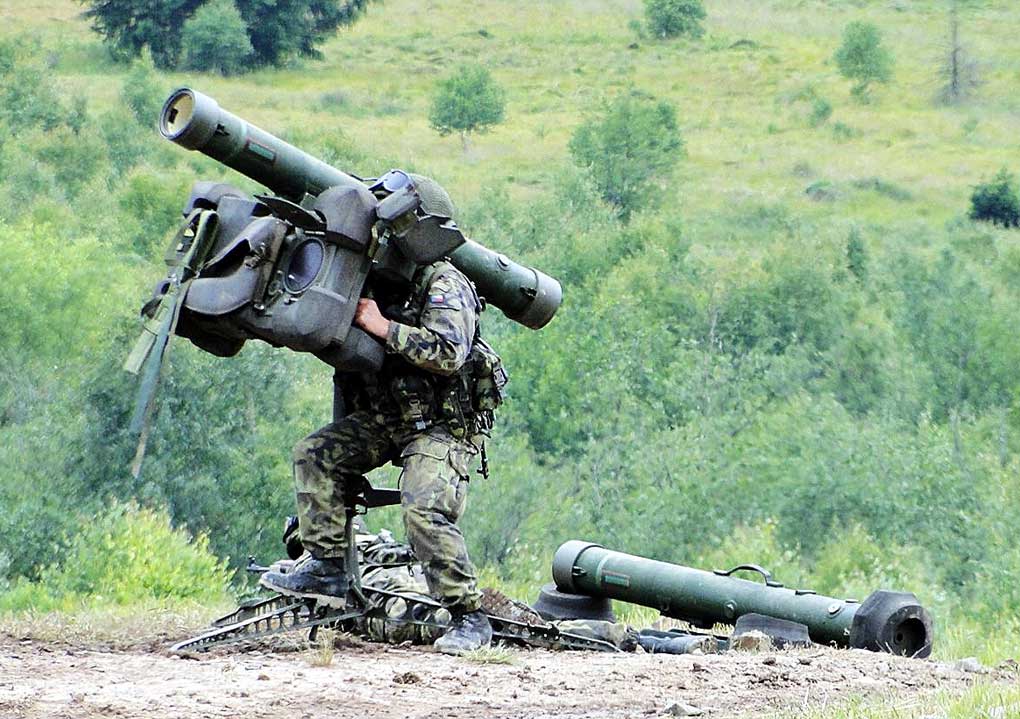
Image: https://en.missilery.info/
Overview
The RBS 70 NG, developed by Saab, is a versatile and highly effective air defense system. Designed to counter aerial threats with precision and reliability, it has gained recognition and admiration worldwide for its exceptional performance. This Swedish-made system has proven its worth time and time again, making it a popular choice among military forces around the globe.
Key Features
The RBS 70 NG boasts an impressive array of features that set it apart from the competition. Let’s take a closer look at some of its key attributes:
- Advanced Target Acquisition: Equipped with a state-of-the-art digital track-via-missile (TVM) guidance system, the RBS 70 NG ensures accurate target acquisition and engagement. This cutting-edge technology allows for efficient tracking of aerial threats, giving operators enhanced situational awareness.
- Enhanced Range and Lethality: With an extended engagement range of up to 9 kilometers, the RBS 70 NG can effectively neutralize targets at a distance. Its powerful missile, coupled with advanced guidance algorithms, ensures a high level of lethality against a wide range of airborne threats.
- Rapid Reaction Time: The RBS 70 NG is renowned for its swift response capability. Its user-friendly interface and intuitive controls enable operators to quickly engage targets, minimizing the risk of potential harm. In critical situations, every second counts, and the RBS 70 NG delivers on this front.
Compact Design
One of the standout features of the RBS 70 NG is its compact design, which offers several advantages. Its portability allows for easy deployment in various terrains and operational environments. Whether it’s protecting military bases, vital infrastructure, or high-profile events, the RBS 70 NG can be swiftly deployed to counter any airborne threat.
Despite its size, this air defense system packs a powerful punch. By leveraging advanced technology, the RBS 70 NG maximizes its capabilities while maintaining a compact form factor. This makes it an ideal choice for military forces requiring a versatile and effective air defense solution that can be easily transported and operated.
In conclusion, the RBS 70 NG by Sweden is a formidable air defense system that combines advanced target acquisition, enhanced range and lethality, and a compact design. It offers military forces a reliable and efficient means of countering aerial threats. With its exceptional performance and proven track record, the RBS 70 NG continues to be a dominant force in the world of air defense systems.
Conclusion
In conclusion, the world of air defense systems is constantly evolving, with nations investing heavily in advanced technologies to protect their skies. In this blog post, we have highlighted the top 10 air defense systems that are considered to be the most formidable and effective in the world.
From the widely recognized Patriot system to the cutting-edge S-400 Triumph, these air defense systems showcase the advancements made in radar technology, missile capabilities, and overall interception effectiveness. Each system offers unique features and capabilities tailored to meet the specific defense needs of different countries.
It is important to note that the rankings provided in this blog post are based on a combination of factors, including range, accuracy, mobility, and overall performance. However, the effectiveness of an air defense system also depends on various other factors, such as the training and expertise of its operators, the integration with other defense systems, and the geopolitical context in which they are deployed.
As technology continues to evolve, we can expect further advancements in air defense systems, with increased capabilities and integration of artificial intelligence. The importance of air defense systems cannot be overstated, as they play a crucial role in safeguarding national security by neutralizing potential threats from hostile aircraft and missiles.
Related Articles
10 Best Handguns for Self-Defense
When it comes to...
The Truth About Sanctions: Why Don’t They “Work”?
In 2022,...
History of Israel-Palestine Conflict
Israel and...
After the WAR initiated by HAMAS on October 7th, the Middle East will not be the same
On the -th of...
The Israeli army is prepared for an offensive on the Gaza Strip, involving attacks from “air, sea, and land.”
The IDF (Israel...
War in Israel: Current Developments – Video
Rafah...
Russia vs USA: Who Would Win in a Potential War?
In the...
NATO vs China: Who Would Win in a Potential War?
In the realm of...
11 Best Assault Rifles in the World
Welcome to a world...
Yevgeny Prigozhin (Wagner founder) is dead
According...
What You Need to Know About Joining NATO
Has any country...
Terrifying Realities of a Potential Nuclear War
The Devastating...
What to Do in Case of a Nuclear Attack
What to Do in Case...
11 Strongest and Most Powerful Navies in the World
When it comes to...
The Most Powerful Nuclear Weapons
The sheer power...
Understanding the Nature of War – The Clash of Wills
War is the...
Ukrainian Defense Forces Celebrate One-Year Anniversary of Kherson Region Liberation
Around one year...
Prigozhin First Video Speech After Unsuccessful Uprising
Following a recent...
11 Best Sniper Rifles in the World
Important Factors...
What is Russia saying about the war in Ukraine, Episode 1
Did you ever...
13 Most Powerful Weapons in the World
Weapons of immense...
What is Happening in Russia, Episode 3
Welcome to the...
What is Happening in Russia, Episode 2
Have you ever...
10 Strongest Tanks in the World
Tanks represent...
10 Strongest Armies in the World
When it comes to...
Putin: We cannot stop the fire when they advance on us!
Putin ten...
Alexei Navalny Letters From Prison
Image:...
Ukraine’s Struggle for Survival and Western Dependency
Ukraine has long...
What is Happening in Russia, Episode 1
Have you ever...
10 Strongest Fighter Jets in the World
Image:...
10 Strongest NATO Members
Image:...
Mobilized Soldiers Expose Dire Conditions and Neglect in Deployment to Luhansk
source:...
Why is everything so poor and sad in Russia?
Image:...
Tensions Escalate in Northern Kosovo as Serbian President Mobilizes Army
Image:...
Putin’s Russia and the Need for a Fresh Security Approach in Europe
Image:...
DeSantis Declares Presidential Bid with Elon Musk
Image:...
Russian military personnel shelled the Zaporizhia Nuclear Power Plant
Image:...
Prigozhin Revelations The Truth Behind the Capture of Bakhmut
Image:...
President Zelensky Visit G7 Turning Point in Russia-Ukraine War
Image:...
Turning a Blind Eye No More: Zelensky’s Bold Stand Against Crimean Annexation
Unfortunately,...
Navigating the Fluidity of War and Geography: Insights and Strategies
War is Geography:...
Latest Updates on Russian Invaders’ Activities in Occupied Territories
Russian Invaders...
US Denies Ukrainian Pilots Training on F-16 Fighter Jets
Complexities of...
West Strong Support for Ukraine’s Recovery and Containment of Russia
Kremlin's Failed...
Ukraine Supreme Court Chairman Confronts Allegations of Blatant Bribery
Vsevolod Knyazev...
Gold Coin Treasure from Alexander the Great Era found in Annexed Crimea
Crimea's Hidden...
Rishi Sunak Hails Zelenskyy as a Modern-Day Churchill
Volodymyr...
The Moral Factor in War: Ukraine’s Key to Victory
"We were actively...
The West’s Triumph in the New Cold War: Technology of Freedom Wins Out
The Chinese leader...
The Illusion of Power: How Putin’s Russia is Making the Same Mistakes as its Past Leaders
Modern Russia and...
